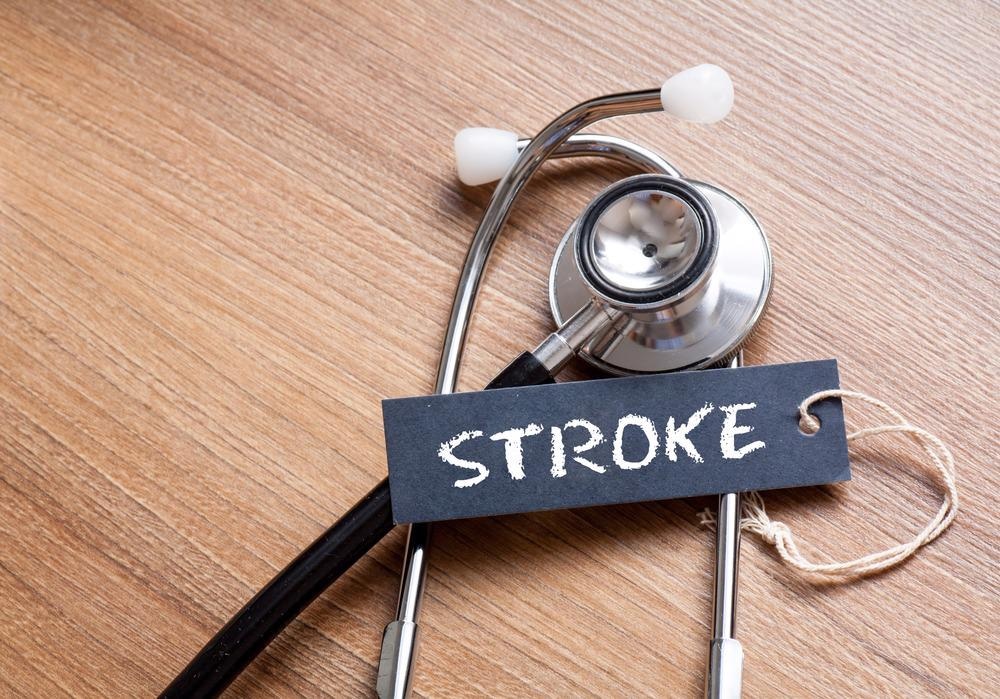A Singapore-based health and robotics technology company, Fourier Intelligence, released the world’s first three-dimensional back-drivable robot, suitable for the robotic rehabilitation of stroke patients.

Image Credit: Lemau Studio/Shutterstock.com
This robotic rehabilitation therapy was launched during the international conference RehabWeek in September 2021. The robotic system, ArmMotus EMU, is said to break new ground in using intelligent devices for physical therapy and stroke rehabilitation.
Robotic Rehabilitation: ArmMotus EMU
The ArmMotus EMU, launched this year, is said to be the first robot capable of back-drivable upper limb rehabilitation in three dimensions ever produced. It is a multi-function, immersive robot representing a breakthrough in the still-emerging field of robotic rehabilitation.
The human-machine interaction concept for the EMU was end effector-based. In robotics, an end effector is a device at the end of the robotic arm that interacts with the robot’s environment in any number of ways.
The end effector is moved in space with a cable-driven mechanism with four joints. This reduces friction and inertia while the system is in motion. The four-link structure also means that the robot device's control system can be more responsive while maintaining good efficiency in terms of movement.
Movement in three dimensions of space required the Fourier's robotic rehabilitation system's developers to break new ground in terminal control and technical content, building on advances in robotic therapy targeting one-dimensional upper limb rehabilitation.
A force feedback technology platform was also developed by Fourier Intelligence and was used for its robotic rehabilitation device. It works by simulating a therapist by exerting force mechanically. The platform is already extensively field-tested, being a leading product in robotic devices across the industry.
By including the platform in its robotic rehabilitation technology, Fourier Intelligence is also putting it into a three-dimensional training space which will, over time, lead to more realistic rehabilitation movements and guides for stroke survivors to use to complete increasingly complicated physical rehabilitation training regimens.
The robotic therapy supports upper limb cooperation and mirror training, key parts of stroke and other physical rehabilitation therapies. It can work with stroke patients rehabilitating both arms simultaneously.
This robotic rehabilitation creates an interactive, immersive experience for stroke survivors, which Fourier Intelligence says is important for realizing health outcomes. David Yang, a product director at the company, said:
By equipping EMU with games such as table tennis, cooking, and fishing, this would simulate activities of daily living even more. The boring and repetitive training actions in traditional rehabilitation make it boring for patients to train for a long time.”
The University of Melbourne (Australia) Robotics Laboratory jointly built the robotic rehabilitation system, ArmMotus EMU, with Fourier Intelligence over a partnership spanning the last two years. The ArmMotus EMU project was led by Melbourne’s Professor Denny Oetomo, who said:
“The robot offers a large workspace with very minimal resistance and reflected inertia of the robot on the patient. This would allow the patient to move freely. Combined with the appropriate gravity compensation of the weight of the arm, patients with weak or little arm function are able to carry out therapy without exertion.”
Robotic Systems Enable Better Rehabilitation and Treatment of Stroke
Oetomo recently contributed to another joint project between Fourier Intelligence and the University of Melbourne Robotics Laboratory, which also focused on robotic rehabilitation for stroke treatment.
Evaluation is critically important when it comes to determining how effective certain treatments are for rehabilitation for stroke patients. Evaluating treatments is complicated by the large variations in motor recovery from one person to the next, as well as by the limitations of clinical measurement tools commonly used today.
When robotic devices are used in the stroke rehabilitation process, as is the case with Fourier's robotic rehabilitation innovation, continuous quantitative assessment can be made of patients’ progress.
In a recent paper, published in IEEE Transactions in Biomedical Engineering in 2021, a University of Melbourne and Fourier Intelligence-led team used machine learning (ML) methods and to build individual evaluation models for stroke patients undergoing robotic rehabilitation treatments.
The ML technique selected the most important features for evaluation from a large set of traits that could be detected with motion-sensing cameras, then analyzed data collected on these features for feedback and assessment.
The resulting kinematic data helped health practitioners to treat patients by simplifying the modeling of their stroke rehabilitation progress and providing useful evaluation input.
The study included data records regarding 41 stroke patients using three different robotic rehabilitation exercises to enable rehabilitation for their upper limbs.
Replacing Conventional Therapies with Robotic Devices
Dr. Marlena Klaic of the Royal Melbourne Hospital, who was also involved in the ArmMotus EMU robotic rehabilitation project, commented on the rise in robotic rehabilitation and other digital therapies in health in recent years.
She said:
There is a large and growing body of evidence suggesting that robotic devices can improve a patient’s outcome, including function, strength and ADL. This evidence is growing even more rapidly in these pandemic times as more people are exploring digital and remote prevision therapies.”
The Royal Melbourne Hospital was instrumental in the EMU project’s success. It helped by conducting a user-based design study to build the robotic system based on clinical feedback.
The study also found that most clinicians believe that robotic devices could help them with their practice. More often, patients and junior therapists request robotic devices as part of their treatment.
References and Further Reading
Fourier Intelligence (2021) Fourier Intelligence Launches 3D Upper Limb Rehabilitation Robot, ArmMotus™ EMU. [online] Available at: https://fftai.com/2021/09/24/fourier-intelligence-launches-3d-upper-limb-rehabilitation-robot-armmotus-emu/.
Lu, L. et al. (2021). Evaluating Rehabilitation Progress Using Motion Features Identified by Machine Learning. IEEE Transactions on Biomedical Engineering. Available at: https://doi.org/10.1109/TBME.2020.3036095.
Disclaimer: The views expressed here are those of the author expressed in their private capacity and do not necessarily represent the views of AZoM.com Limited T/A AZoNetwork the owner and operator of this website. This disclaimer forms part of the Terms and conditions of use of this website.